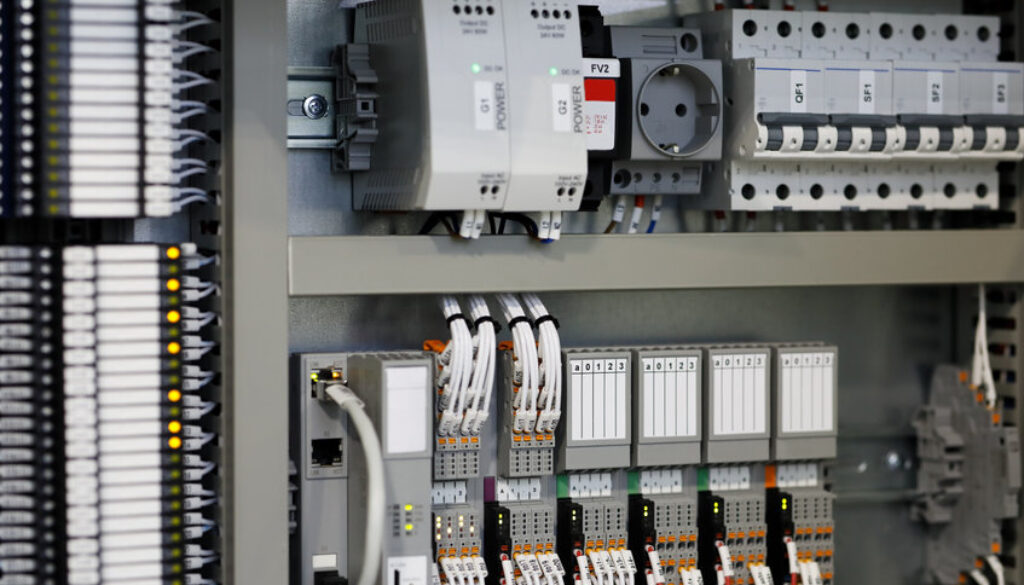An electric panel labeling guide can help you understand what circuits are controlled by which switch or breaker. This is important in case of an emergency power cutoff, as seconds can count. Fortunately, there are many guides available to help you identify these elements. Here are some examples:
Identifying circuit breakers
Identifying circuit breakers on an electric control panel is a crucial skill to have. Not only do you need to know how to shut off an electrical outlet, but you also need to know which circuit breaker to flip to “off.” The electrical panel should be labeled clearly so you can identify the breakers easily.
Most electric panels will have an identifying number embossed on the cover plate next to the circuit breaker. If there are no embossed numbers, you can write the circuit breaker or fuse’s name with a felt-tipped marker. Before attempting to identify a circuit breaker, turn on all lights and devices throughout the house. If you have trouble identifying a circuit breaker, consult an electrician who can help you troubleshoot the problem.
It is important to know the exact function and amperage of each circuit breaker before you purchase one for your electric panel. Choosing the correct circuit breaker is crucial for safety and utility reasons. There are many types of breaker, so you must understand the difference between each.
Circuit breakers are a common component in a residential electrical panel. They help protect the home from electrical hazards and overloads. They also act as convenient shut-off points for individual circuits. Identifying a circuit breaker can be a daunting task, especially for people without the proper knowledge.
To accurately identify a circuit breaker on an electric panel, you need to have the correct measuring equipment. A circuit breaker finder is a great tool that helps you locate a circuit in an electric panel. It is a battery-operated electronic tool that plugs into a household outlet and sends an electronic signal through wires to find a circuit breaker.
When it comes to an electrical panel, you should check the breaker labels and the circuit board. The panel box should have an index label that shows what circuits are controlled by circuit breakers and fuses. Often, the electrical power is distributed through a number of panels, including the main panel and several sub-panels. Once you’ve identified the circuits, you can determine whether the breakers are the proper size to connect the various appliances in your home.
Before attempting to repair an electrical panel, you should identify the type of circuit breakers on your panel. There are two basic types: single-pole circuit breakers for standard outlets and double-pole circuit breakers for appliances. Single-pole breakers protect one 120-volt circuit, while double-pole breakers protect two circuits at the same time. You might also find dual-function GFCI and AFCI breakers for added protection.
You can also try to identify the circuits on your panel by plugging a light into one of its outlets. You may find it hard at first, but it gets easier as you learn to recognize different circuits. This method requires patience and time.
Identifying fuses
You must be familiar with your building’s electrical panel to determine which circuit breaker is malfunctioning. The breaker allows you to turn off power in some or all rooms. It also gives you the option to turn the lights on or off. It is important to note the fuse and circuit breaker numbers on the diagram.
There are two basic types of fuses: screw-in fuses and cartridge fuses. Screw-in fuses are small and round, with a metal base. They screw into a fuse box. The cylindrical cartridge fuse is a different shape and fits into a metal fuse block. It can handle higher loads like dryers and ovens. Fuse boxes can be in closets or prominent areas in a home. They may have a decorative cover with a picture or wood panel.
If you can identify a blown fuse, you can immediately replace it with a new one. The fuse you choose should be the same voltage and amperage as the old one. You should also make sure that you use the right size fuse. Using the wrong type of fuse could damage your wiring and appliances.
A fuse can be blown when too many lights or appliances are plugged into a circuit at one time. This is most often caused by an overload. Using the microwave, hairdryer, and lights all at once could blow a fuse. To identify which circuit is causing the problem, you should first determine what the underlying cause is.
If the fuses are still blowing, it could be a faulty circuit. If this is the case, contact a licensed electrician for assistance. If you can’t find the problem, make sure you label each circuit and keep a flashlight nearby. And don’t block the access to the circuit box!
An electric panel is usually a metal box that is attached to the wall. It will also have a fuse box. You can recognize a fuse box by looking at the row of small cylindrical devices. Fuse boxes are a common feature in older homes. To identify a faulty fuse, you can perform a continuity test.
When a fuse has blown, it is best to remove it. To do this, you may need a small screwdriver. You will need to check the fuse’s wire to see if there is a gap in it. If the wire shows a dark metallic smear inside the glass, it is likely a blown fuse.
When replacing a fuse, look for the same type or an equivalent unit from the same manufacturer. If you can’t find an exact match, take your old one to a hardware store and compare. Make sure the replacement product matches the old one, and consider the speed of the element, voltage, and ambient temperature. If you are still unsure of which one is right for your electrical system, contact a licensed electrician or electrical technician.
Fuse boxes are metal boxes that contain cylindrical or cartridge fuses. They are smaller than electrical service panels and are designed to protect electrical circuits by opening when they experience an abnormal current load. They are sold in various shapes and sizes, with each type designed to protect a circuit with a certain electrical parameter. The operating current and voltage of each fuse will determine the type of circuit breaker it protects.
Identifying bus bar
First, you need to determine the location of the bus bar on the panel. The bus bar is a long metal bar that runs vertically through the panel. In order to locate the bus bar, you should remove the panel cover. Then, identify the wires that run along the busbar from top to bottom. This will make the job of recreating the connections easier.
The bus bar is usually made of copper. Copper is used in many electrical utilities around the world because of its ability to withstand higher temperatures. It also provides added security during short circuits. A copper busbar’s surface oxidizes naturally, forming a thin, hard layer that is still conductive. By contrast, exposed aluminum surfaces form an oxidized film that is not conductive and may cause joint failure.
The bus bar on an electrical panel can become worn or pitted over time. If you need to replace this part of the panel, it is best to consult a professional electrician. If you don’t know how to locate the bus bar on an electrical panel, you can use a flashlight to help you identify it.
The bus bar can also be a clue about the type of circuit breaker. NB breakers, for example, have a copper bus bar. Type NB breakers have screws that attach to the bus bar. This is an important step in identifying a bus bar on an electric panel.
Bus bars come in a variety of shapes, sizes, and variations. Choosing the right one for a particular system depends on the electrical demands, reliability, and ease of maintenance you’re looking for. Another factor to consider is the cost. Some busbars are cheaper than others. A single bus bar arrangement is usually a good option if you don’t need a lot of flexibility and need low initial costs.
The bus bar is the part of an electric panel that controls current and voltage. It can either be a single or double bus breaker. If you want to maximize the reliability of your system, you should choose a double bus double breaker. With this type of system, faults won’t interrupt the whole system. It also allows you to transfer the load between busbars as needed. However, this type of breaker can be expensive to maintain.
Most electric panels have two bus bars. The top bus bar serves appliances and outlets in the home, while the lower bus bar feeds smaller appliances. It is also known as the neutral bus bar. Identifying bus bar on an electric panel is essential to make sure that you’re not overloading the circuit.




